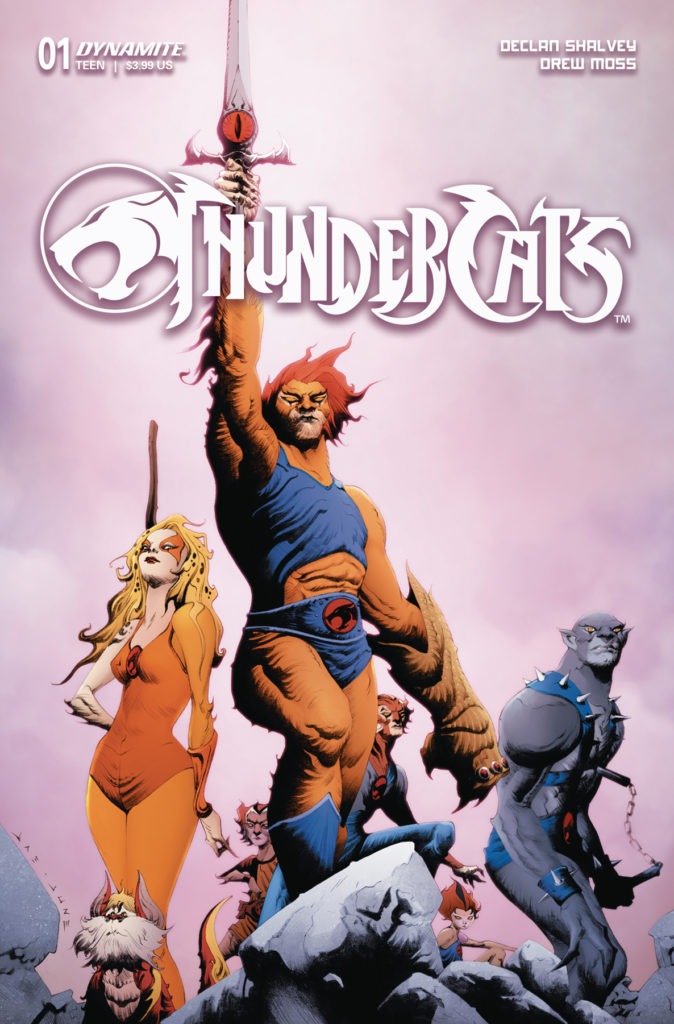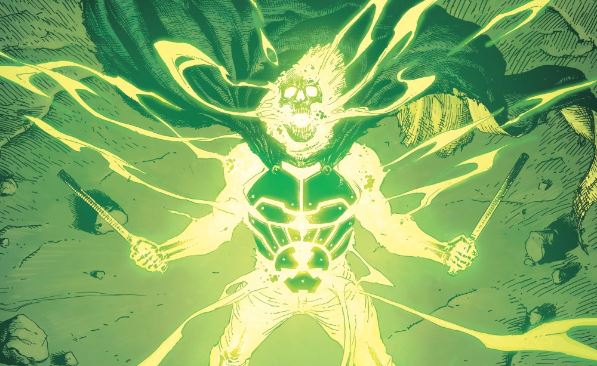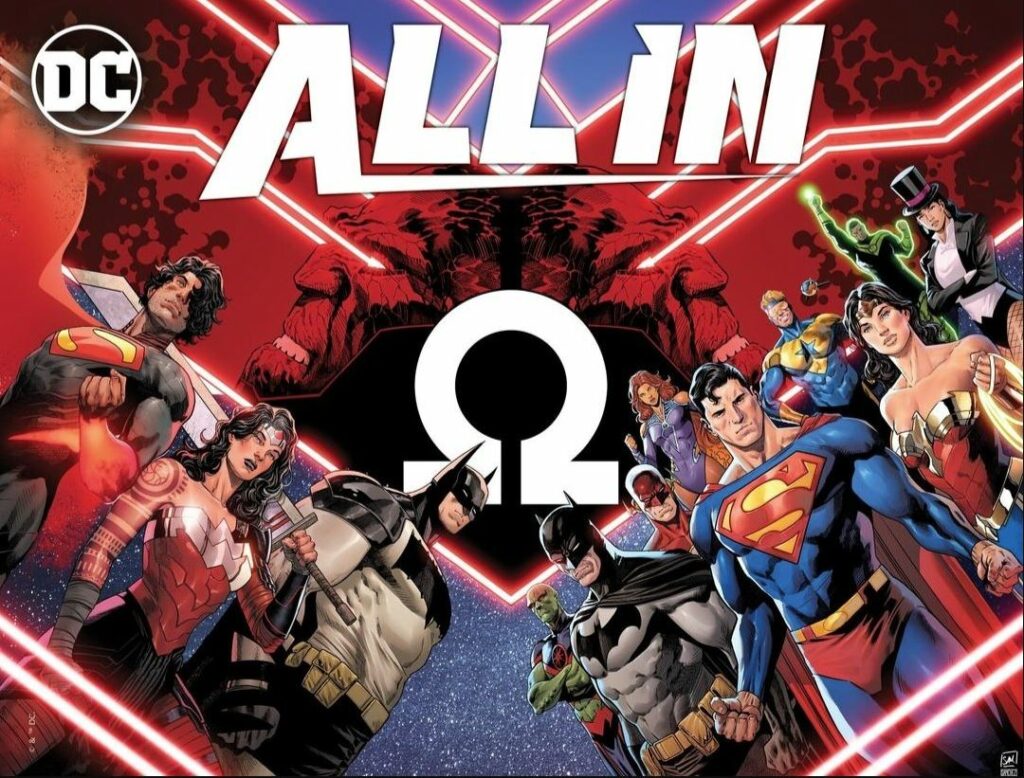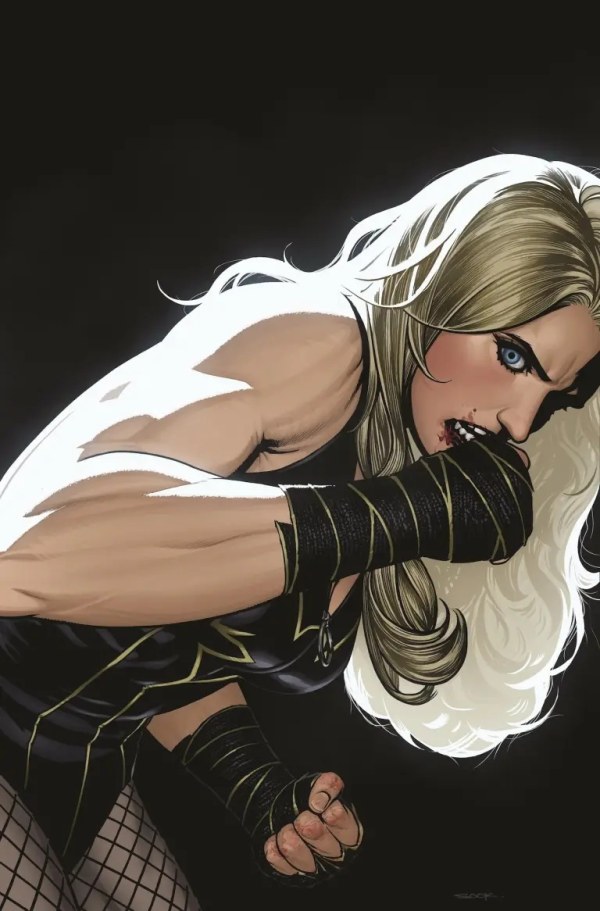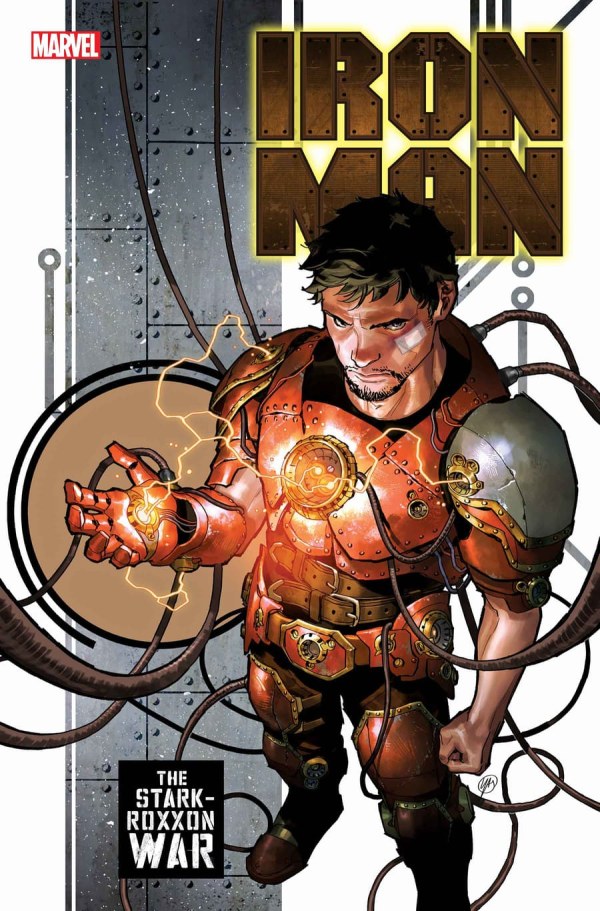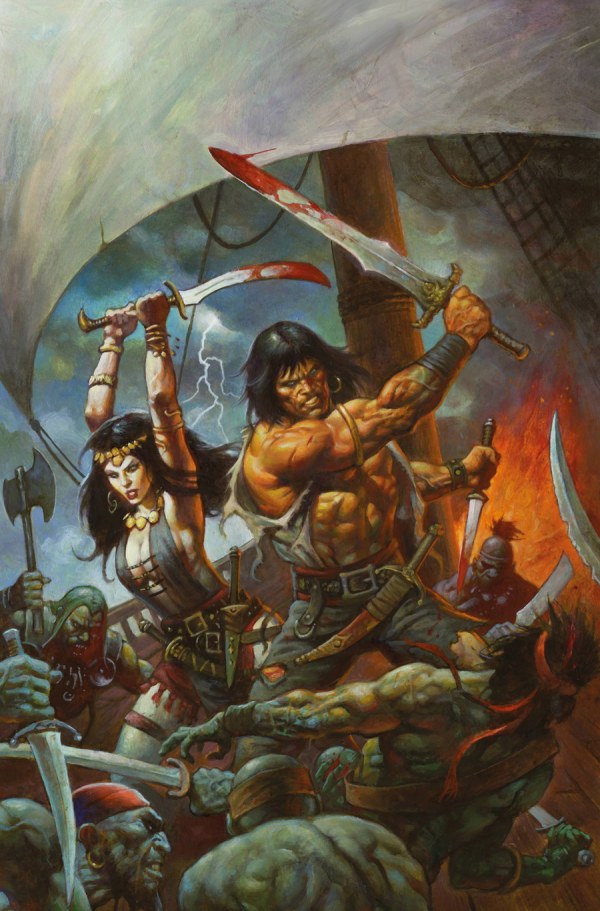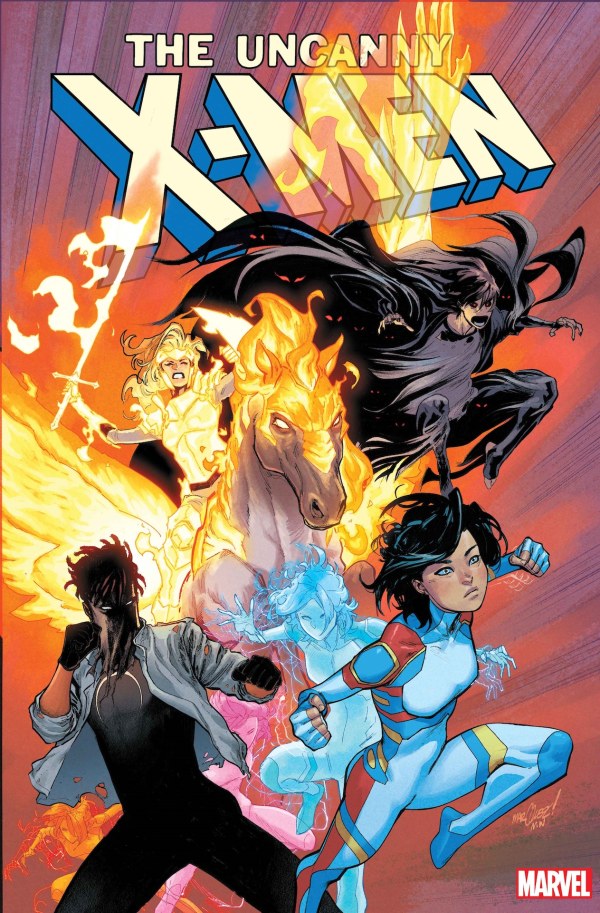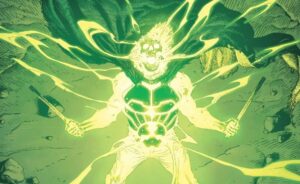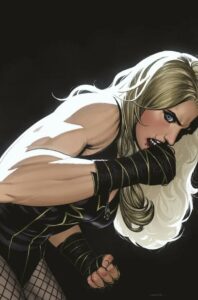The iconic team from the 1980’s are back, breaking sales records in the process as Thundercats #1 from Declan Shalvey and Drew Moss explodes onto shelves with over 170,000 copies sold already.
Between this, the revival of the Ultimate Universe at Marvel, Conan the Barbarian‘s move to Titan Comics and the emergence of the Energon Universe over at Skybound, the rise of fan-favourite franchises from decades past is more prevalent than ever before. And with that, so too is the role of nostalgia in our entertainment becoming an evermore present question. How do you successfully modernise something that worked twenty to forty years ago? How to you open up old properties to new readers, and how do you do it without alienating the old?
Just like all those other new launches, Thundercats #1 is deeply concerned with how alive the past truly is.
Building on What Came Before
In a recent interview with Sal Crivelli from Comicpop, writer of Thundercats #1 Declan Shalvey mentions that while he revisited the original ’80s cartoons to help inform his work, he had no intentions of making ‘a comic of the show’. Nor did he want to read so closely into that interpretation, or any subsequent interpretation, that his work became restricted in trying to emulate a previously seen story. I can’t personally vouch for how near or far this tracks with the original animated series, though research online shows it maintains that informed-by-not-beholden-to attitude that Shalvey was aiming for.
What is apparent though is how intimately this book is in conversation with the idea of the past, and the versions of ourselves – whether that be our literal sense of self, our culture, or our entertainment – that we find there.
Thundercats #1 opens with a strong introduction: a first page that covers the exodus from Thundera, followed by a gorgeous double page splash that both boldly introduces our core cast while also infusing the title with an immediate sense of wonder.
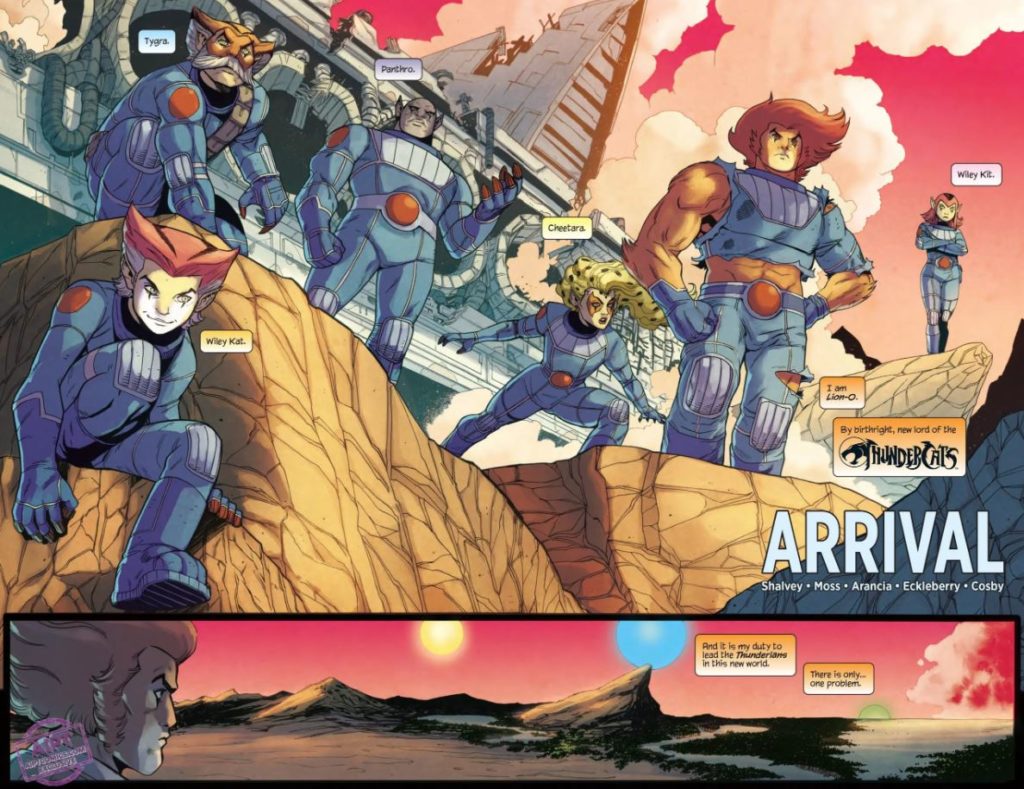
Moss’ linework is strong and confident, quickly conveying the broad strokes personalities of each member of the team, and is supported by evocative colourwork courtesy of Arancia. The depiction of Third Earth in particular, with its saturated peach skies that evoke passion, life and danger, works wonders at establishing mood while also laying the groundwork for some of the emotional themes the issue will come to play with.
Shalvey’s narration is similarly efficient, quickly organising all the key information that the reader, new or old, would need to grasp the state of play.
In fact, the whole segment feels decidedly redolent, not just of the emotional stakes it’s trying to convey but also of so many other comics. The double page splash above feels like it’s pulled straight from one of any number of eras of X-Men, an association both reasonable given certain similarities the properties share and also entirely complimentary. The first page, charting the Thundercats’ escape from Thundera, even feels vaguely reminiscent of the iconic one-page recap at the start of All-Star Superman.
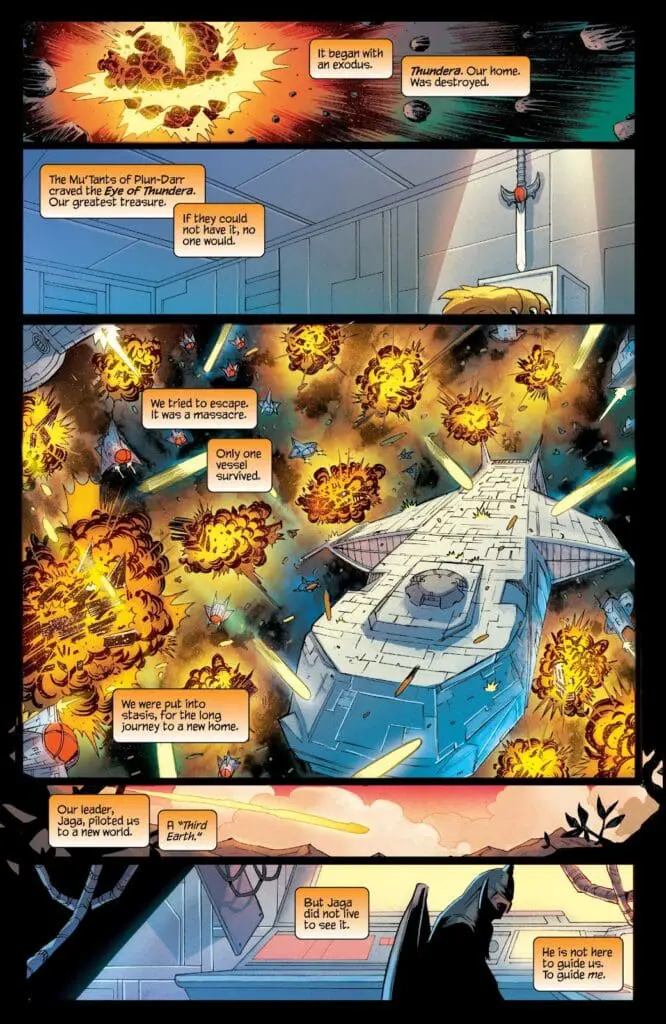
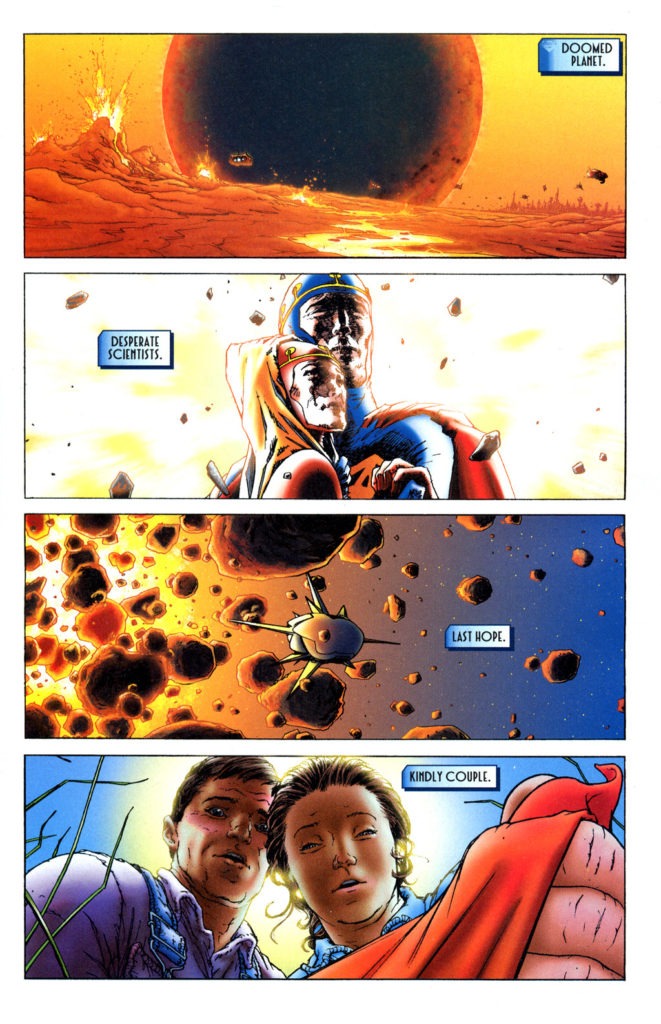
This feeling of calling back to past stories, whether they be past Thundercats tales or other properties altogether, permeates Thundercats #1. It is a book, for better or worse, that doesn’t shy away from its influences.
Case in point, following this opening the book moves (somewhat disjointedly, I must say) from one vignette to the next – establishing the core relationships within the group and hurtling our protagonists head long into conflict before they have much of a chance to breathe. On the way, Lion-O and Panthro face off in a blindfolded training session deeply reminiscent of Luke and Ben Kenobi in A New Hope (and, I’m sure, hundreds of other stories that don’t come quite as quickly to mind). Then, Tygra, Cheetara and the kids are shown to operate in a kind of familiar, lovable and slightly dysfunctional family dynamic typical of so many team books (again, see X-Men).
None of this feels particularly new, but that’s also not inherently a mark against it.
Shalvey knows the weight of expectations put upon a Thundercats revival. He’s aware of all the competing expectations and needs of the various sections of the audience. Using an underlying narrative framework that, even if you’re completely lost when it comes to Thundercats lore, will feel familiar to the reader is a smart way to set the whole audience on the same level.
As a novice to the franchise, having those footholds, even if they are trope-ish, made Thundercats #1 feel far more approachable. It would have been a mistake to bury the reader in lore and references that only a fraction of the audience could understand, rooting the appeal of the issue firmly in the past. Instead, Shalvey and Moss take the essence of those things that inform us, and use that to create something new. It’s not quite the playful remix of events that something like the Energon Universe is attempting, unveiling the Transformers in an entirely separate, original title like Void Rivals. Nor does it radically reinvent old ideas at the conceptual level, playing with what beloved monikers like the Ultimate Universe can mean in a context 20-years removed. But it does pay deference to the past, and our cultural appreciation for the past in a time that feels more complicated than ever, while also refusing to languish in it.
It mostly embraces nostalgia for what it is – an esteem for the experiences behind us – without surrendering all creative whims to it.
This extends to visual storytelling, just as much as the scripting. Throughout Thundercats #1 I was continually struck by how Moss’ pencils were reminiscent of a more measured version of Rob Liefeld’s art (a connection perhaps made due to one of this issue’s covers being drawn by Liefeld himself).
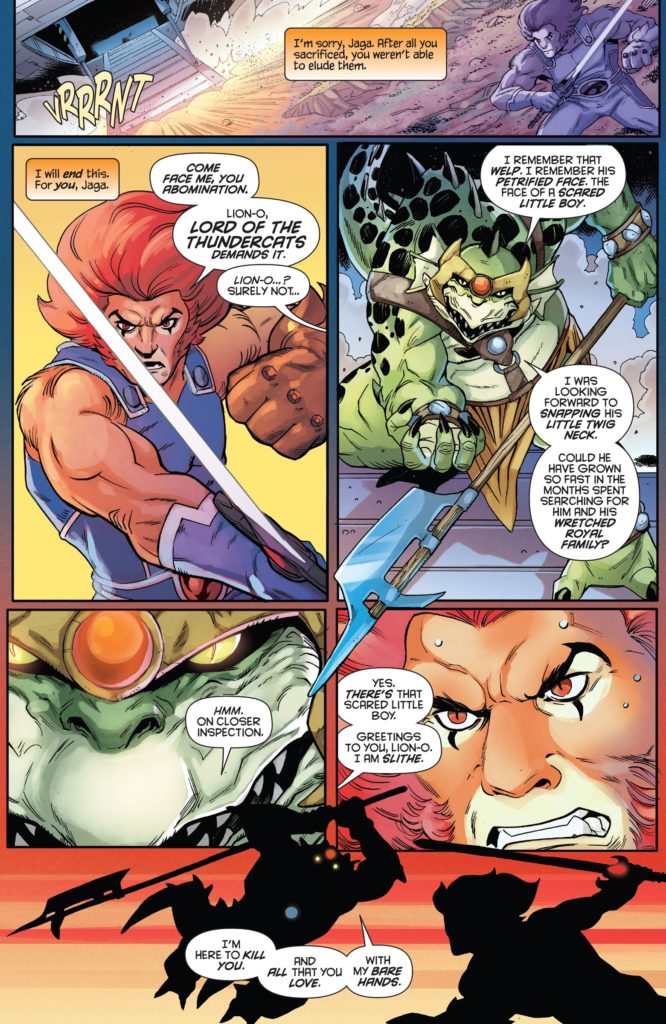
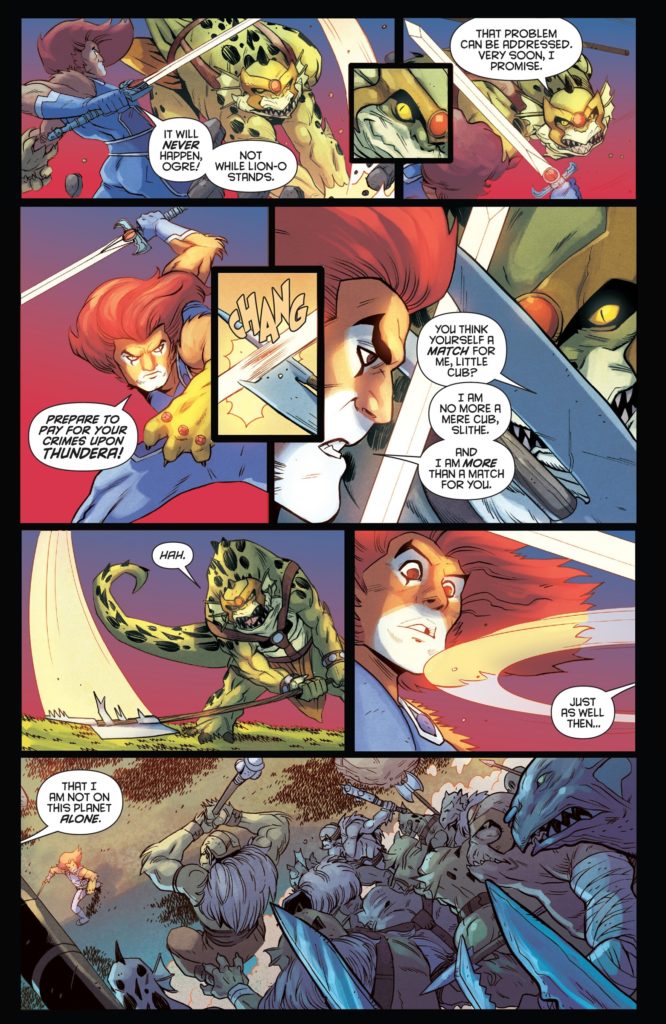
While Moss’ work never quite goes to the extremes that Liefeld’s does, as he maintains a strong and consistent handle on proportions and expression-work throughout, it does read with a similar sort of energy. Characters are almost always in motion, carrying with them a sense of dynamism. The linework is clean and readable, and Moss composes pages in a way that isn’t overly complicated in terms of layout, yet still carries a sense of excitement and structural diversity on the page.
It’s a style that compliments the script, albeit sometimes too much, as the plot of Thundercats #1 moves along at a remarkably brisk pace.
Despite the space given to establishing our characters outside of combat, the constant momentum coupled with the issue’s tendency to jump from one scene to the next leaves the book in a space where it almost can’t pause for breath. No sooner than the Thundercats have landed do when learn of Lion-O’s struggle with leadership and the curious circumstances of it, the significance of the Sword of Omens, the fast-approaching threat of the Mu’Tants and even Panthra’s doubts about Lion-O. Again, it leaves me thinking of ’90s issues of X-Force and the like, constantly moving from one piece of action to the next, always having to introduce something new to entertain the reader.
It means that by the time the villainous Mu’Tants arrive to settle their score with the Thundercats, there’s been little time to build any tension. And yes, conflict with them is inevitable. One might argue that spending time building tension would be a waste of page real estate, given everything else there is to cover. But, it leaves this grand conflict at the end of the issue feeling somewhat rushed. While Shalvey, Moss and Arancia certainly deliver a great spectacle, my expectations of the conflict’s resolution are as forgone a conclusion as the expectations surrounding its arrival. Even the weight of Panthra’s heroic arrival is unfortunately undercut by how quickly and as a matter of course everything unfolds (though, to the team’s credit, the twist in the final few pages does keep things from being too predictable). In this way, the issue feels a little too eager to hit some of those old notes, anxious perhaps that longtime fans would be clambering for a good old fashioned action scene rather than quieter moments that explore character.
And yet, just like the artistic influences present in Moss’ pencils, the overall thrust of the issue remains brimming with energy. Thundercats #1 may not all land quite as solidly as it could, and it may move frenetically through its plot to the detriment of its pace, but the passion for these characters and their stories radiates from the pages.
It’s clear that Thundercats means something to the creative team, and that, in turn, they know how much it means to the audience. The fact that that passion causes them to rush slightly ahead of tempo at times makes this a comic that is endearing even in its weaker moments.
Should You Heed the Call of Thunder?
Thundercats #1 is a book with lots of energy, and lots to say about the state of pop culture today without explicitly speaking to it too much.
Much like the emergence of Lion-O from his stasis pod, this issue presents ideas conceived in one time and launches them headfirst into an entirely different era. And just like Lion-O, this issue manages to retain so much of what the Thundercats was decades ago and still have it work, even if a few small details have changed along the way.
So, despite the odd stumble here and there, Thundercats #1 successfully revitalises the beloved property by giving readers of all types something to love. And while I didn’t come away from reading the issue with any grand sense of revelation, I certainly felt welcomed and I felt delightfully entertained – and frankly, I’m not sure you can ask for more.


